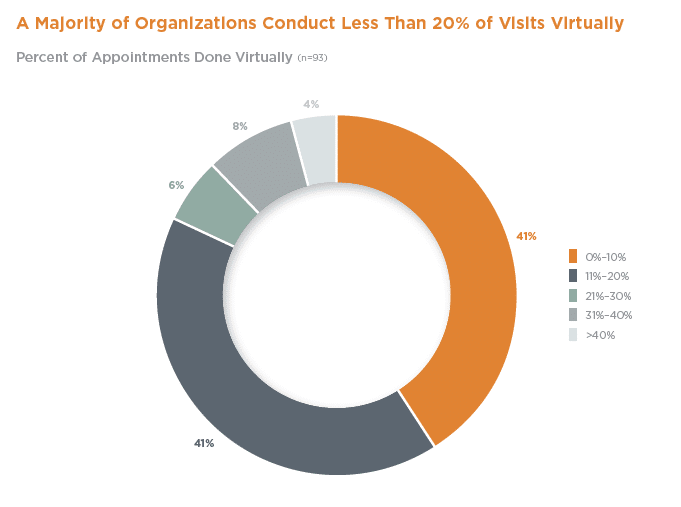Embracing the Strategic Aspects of Telehealth

According to a survey from the Center for Connected Medicine and KLAS, “despite a surge of telehealth services during the COVID-19 pandemic, more than 80% of organizations report doing less than 20% of their appointments via virtual care.” The study adds that “the small handful of respondents currently conducting more than 30% of their appointments virtually often note that their volumes are still inflated by the pandemic and expect their long-term volumes to be lower.”

Image source: “The Intersection of Value and Telehealth,” Center for Connected Medicine and KLAS, August 2021
Why It Matters:
There has been a lot of attention in the industry about the drop in volume of virtual visits (especially as a percentage of overall visits) since the initial phase of the pandemic. However, it is important to remember that the immediate tactics to provide remote care to patients in response to the pandemic was not intended to be a strategic or sustainable model. A decrease in volume was both inevitable and expected.
We think a more critical factor right now is how organizations can build upon what they’ve learned during the pandemic to be more strategic with virtual care. At many organizations, virtual care solutions continue to be used largely as a substitute for an existing visit as opposed to an agent of change. Forward-thinking health systems today are the ones who see the opportunity for innovation – and who are embracing the strategic aspects of a true telehealth program. For example, in primary care, leading providers are focused on optimizing and standardizing their care delivery model with a “virtual first” approach to ensure a more predictable and sustainable delivery model (e.g., making virtual visits the default for specific appointment types, etc.). Meanwhile, in clinical specialty areas (cardiology, oncology, etc.), leading providers are using telehealth as a strategy to drive growth (e.g., leveraging virtual care to extend their specialty reach into new populations of patients, etc.).
This article was originally published in Impact Advisors’ digital newsletter: The Impact Advisor 4Q2021.
























